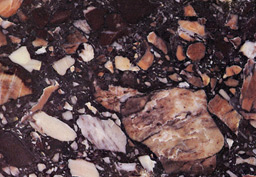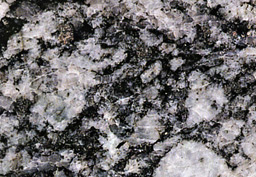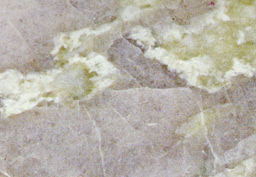Utilization of Rocks
Rocks have been used in various ways since the appearance of mankind, their use being increasingly diversified with the advance of civilization. Rocks were first used as simple tools and weapons, later as raw materials for works of art and ornamentation material on buildings as well as building stones.
In the Korean Peninsula, granite, widely distributed across the country, has been the most commonly used building stone and material for cultural stone objects. Even today, granite is the most abundant and important building stone in Korea.

Pocheon, Korea
Light pinkish, feldspar-biotite granite, mined in this quarry, is used as a building stone.
Instead of geological terms, nongenetic are used for building stones, especially in the commercial market for stone. In general, they are named after their region of origin (Pocheon Stone, Mungyeong Stone, Jeju Stone, etc.), or after some visible characteristic (Apricot Flower Stone, Cloisonne Stone, Black Stone). Most rocks can be used as building stones, but the rocks listed below are those commonly used commercially in Korea.
Igneous Rocks

Pinkish Feldspar Granite(Mungyeong Stone)
Mungyeong, Korea

Spherulitic Rhyolite
(Apricot-flower Stone)
Cheongsong, Korea
Sedimentary Rocks

Limestone
(Pungchon Limestone)
Jeongseon, Korea

Calcareous Breccia
(Cloisonne Stone)
Jeongseon, Korea
Metamorphic Rocks

Porphyroblastic Granitic Gneiss
(Snowflake Stone)
Hadong, Korea
